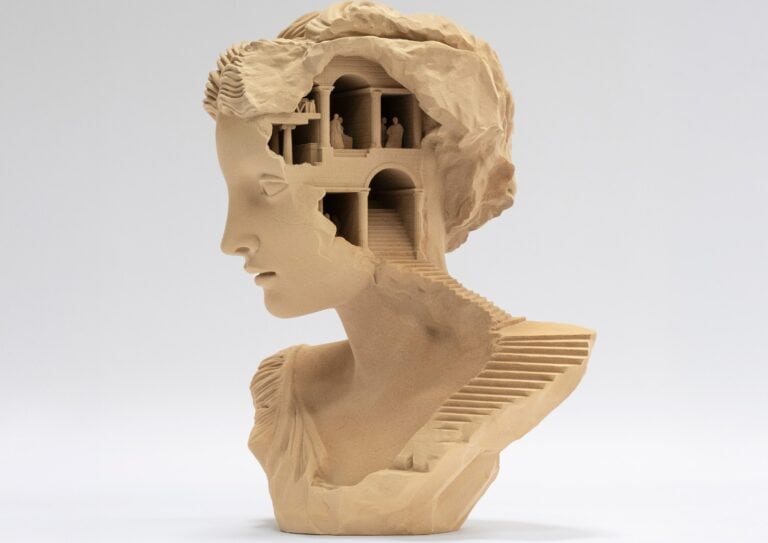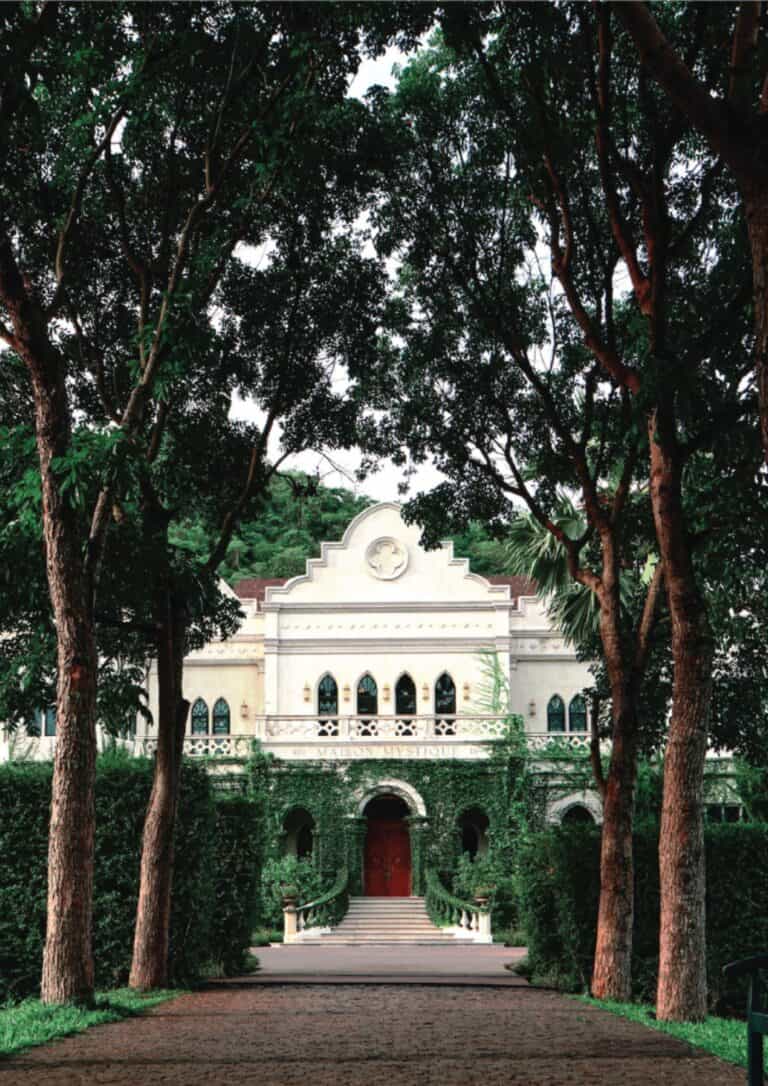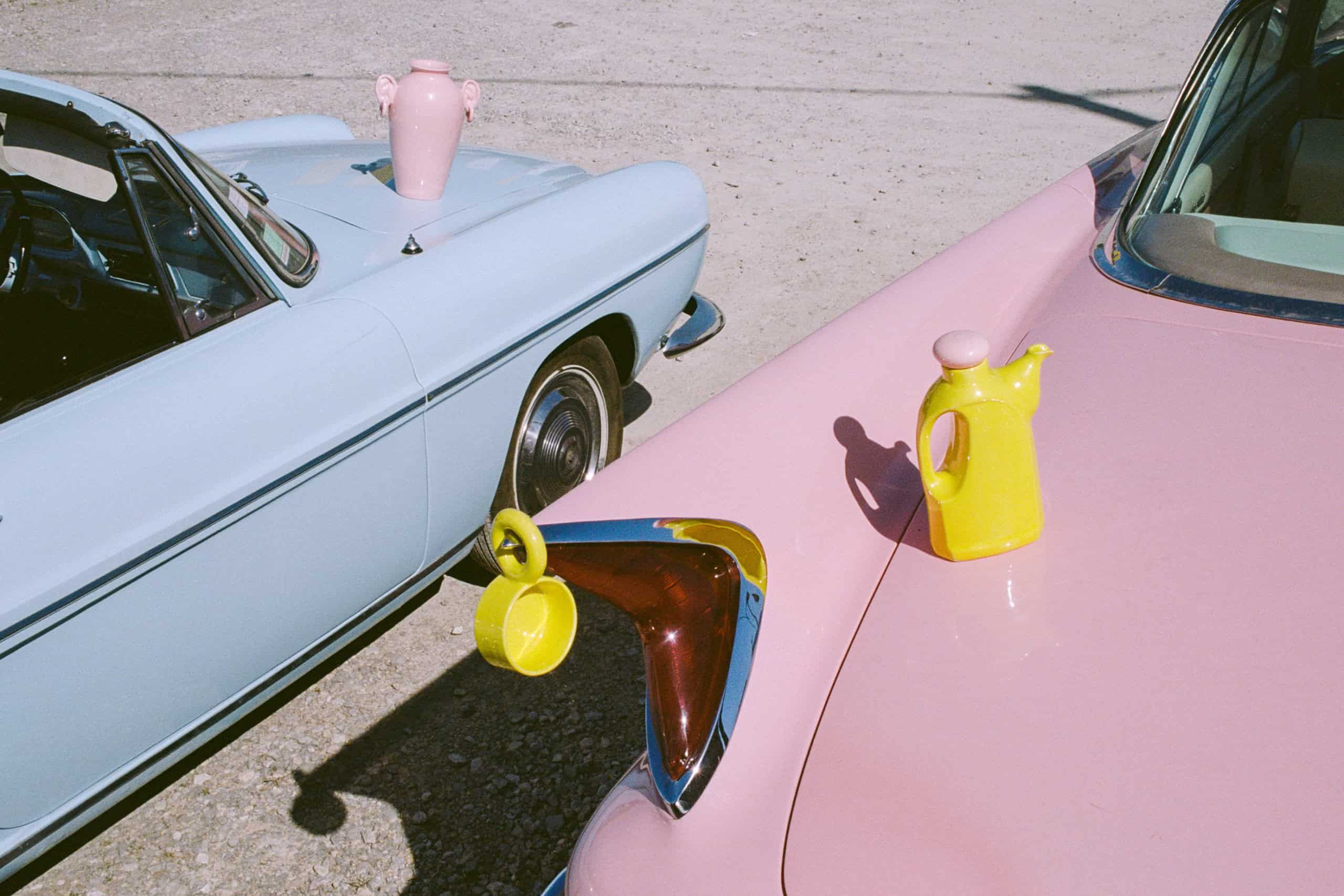
LOLA MAYERAS: Where Vases Have Ears
Marie Loire Moulin
LOLA MAYERAS: Where vases have ears and gloves become sculptures, bottles turn into teapots, and everyday objects gain a surreal twist. Trained in fashion and raised by a ceramist father in the south of France, Lola Mayeras blends humor, surrealism, and utility in her work. As a result, her pieces feel both sculptural and subversive. In this interview, she discusses her playful process, the influence of clothing on form, and how materials like clay and fabric help her tell stories. Moreover, she reflects on color, collaborations, and why domestic objects should never take themselves too seriously.
IRK: Lola, your work feels sculptural and often ironic. Where does a new piece usually begin for you?
Lola: It usually starts with a reference, something I’ve seen, misread, or overheard that sparks an idea. I often begin by drawing existing objects, then I distort or twist them. The form comes next, followed by questions about which materials to use and how the piece might reinterpret or subvert something familiar.
IRK: Many of your pieces seem to twist the function of everyday objects. What role does absurdity or surrealism play in your design process?
Lola: A big one. I like it when things feel familiar but not quite. Like if you’re looking at a dream version of a recognizable object like a mug or a lamp. Adding these absurd twists helps me play with the idea of functionality and make objects that feel alive.
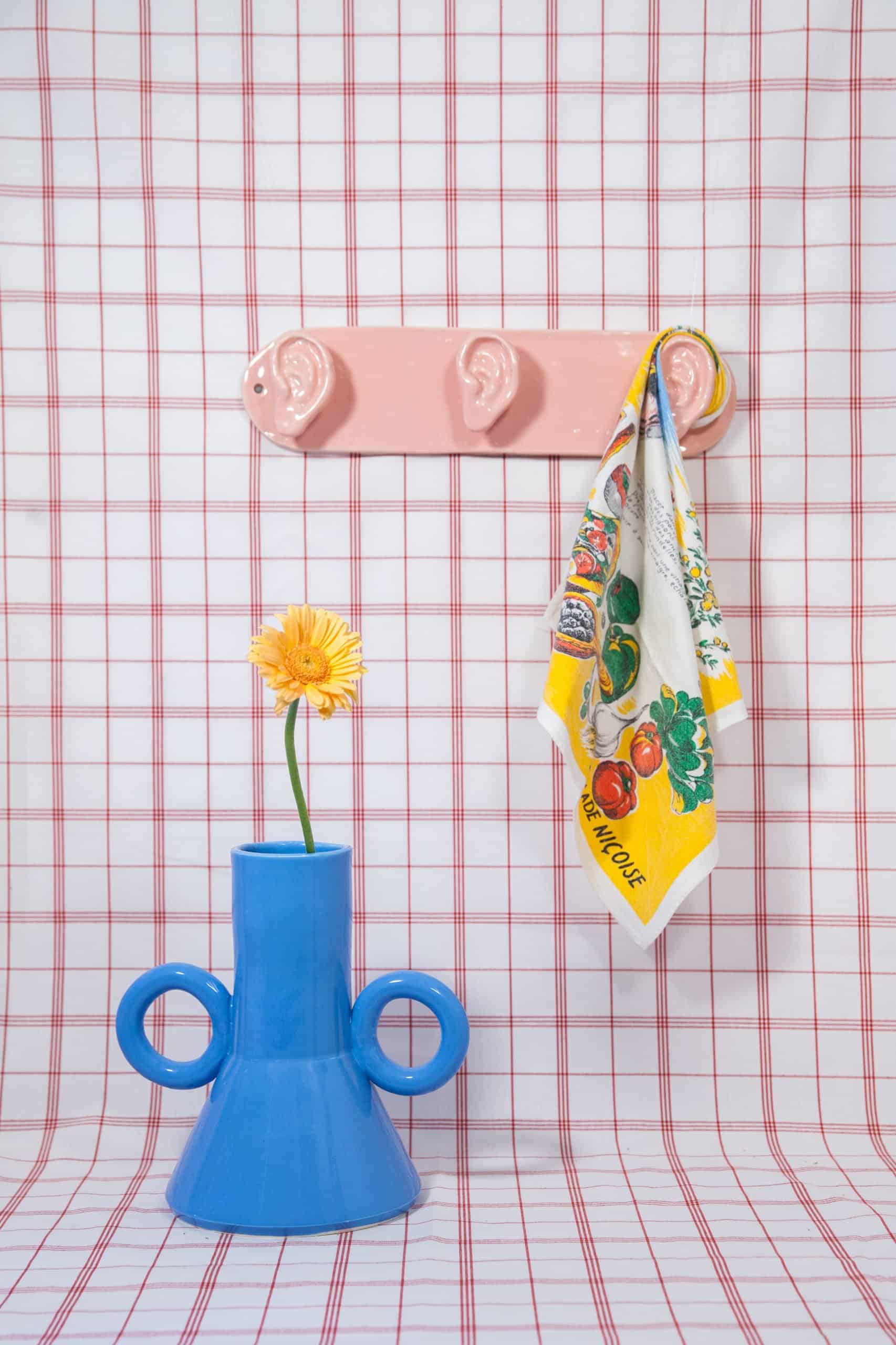
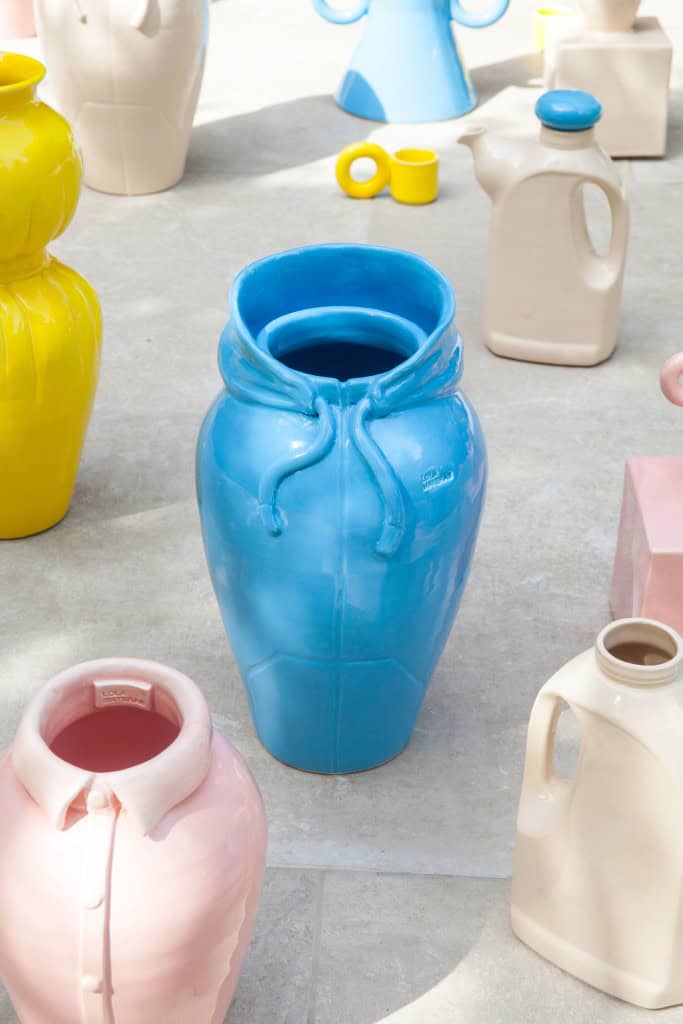
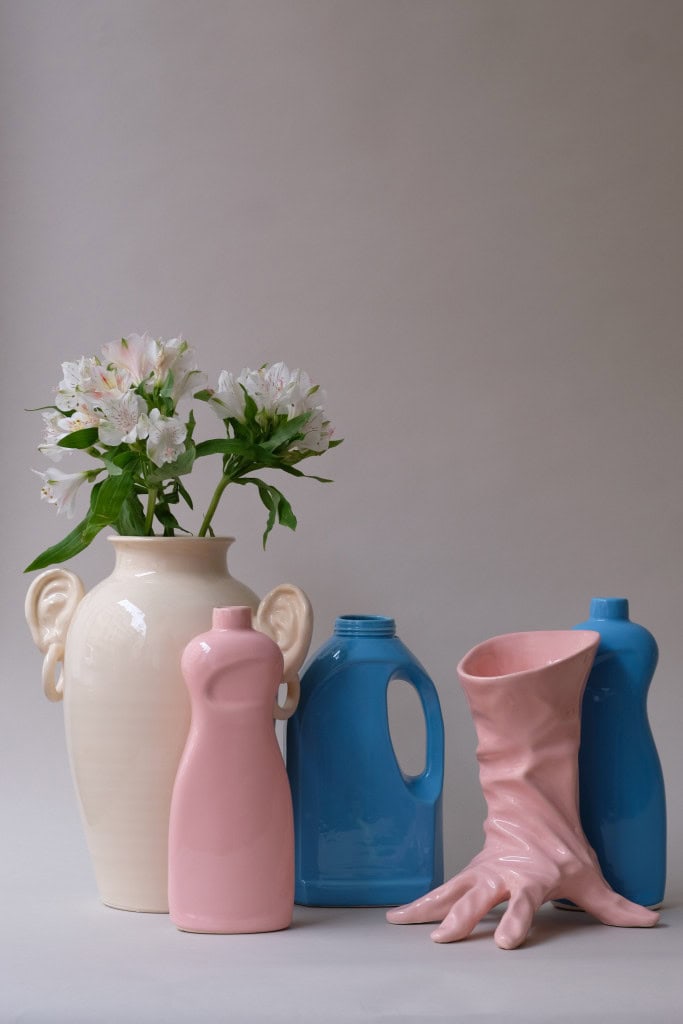
Lola Mayeras’ ceramics blur the line between object and character. Sculptural, surreal, and deliciously offbeat. Courtesy of Lola Mayeras
IRK: What are some of the most unexpected references you’ve ever pulled into a collection?
Lola: I love reusing clothing details: like a collar, a seam, or a pleat, and translating them into ceramics, mixing softness and rigidity. I stole the shape of a museum display stand, that kind of pedestal you usually don’t even look at, and turned it into the main structure of a floor lamp. It’s not a support anymore, it became the piece itself.
IRK: How has your past in fashion shaped your way of thinking about structure, silhouette, or even storytelling?
Lola: Fashion taught me about volume, and how objects take up space, and how to build a narrative across a collection, even if it’s subtle or ironic. I still think in silhouettes, like pieces that are meant to belong together.
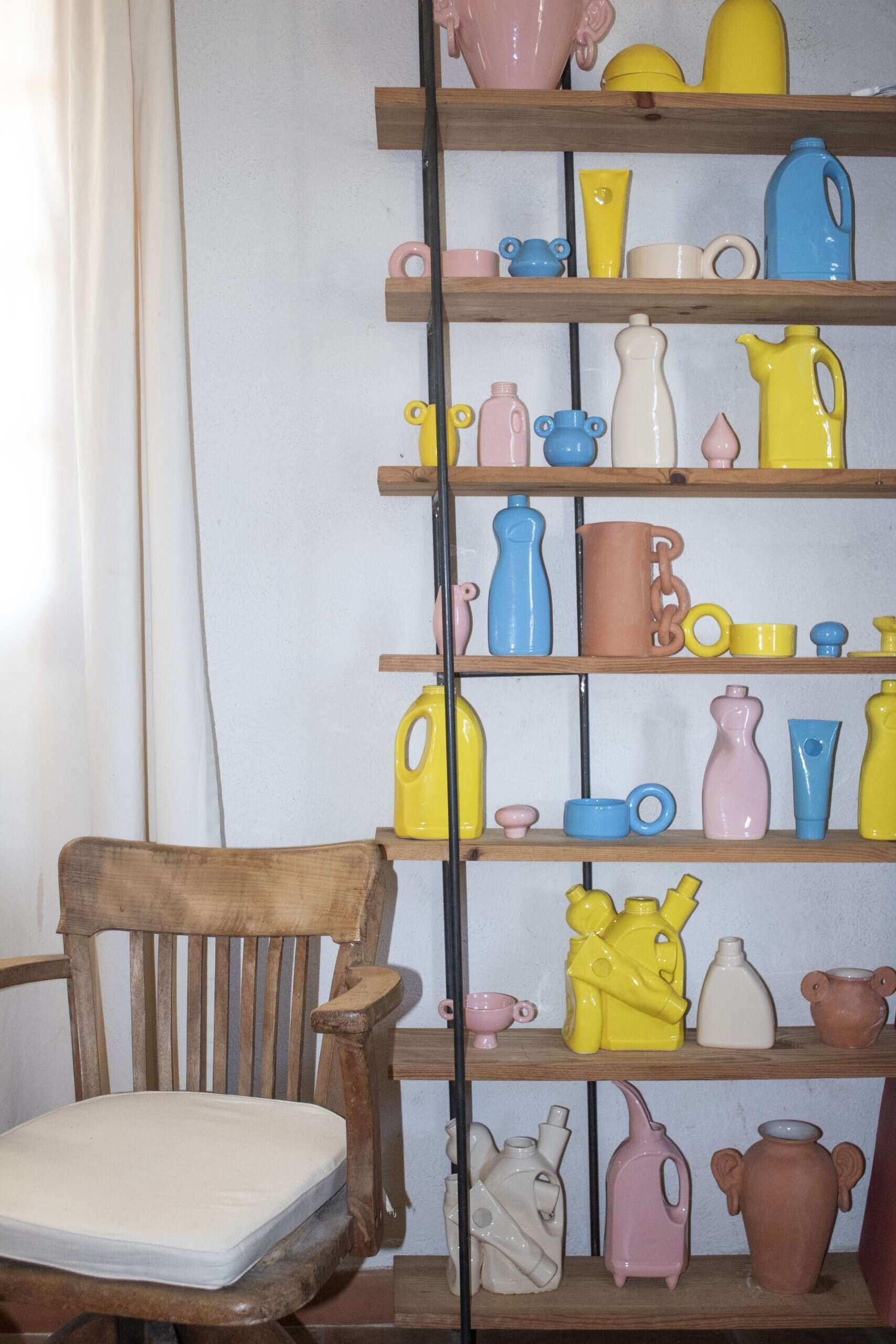
IRK: You move from Earthenware to fabric. What does each material allow you to explore that the other doesn’t?
Lola: For me, it’s more about finding the right way to bring an idea to life. Some ideas need structure and tension, while others work better in something soft and flexible. Clay and fabric are just two ways to shape the same vision. I want to explore different areas of the home and build a full collection. Using both materials lets me create objects that live in different moments or rooms, but still speak the same language.
IRK: Can you tell us about a piece that challenged you technically or emotionally during the making process?
Lola: Definitely “IT’S A MESS”, the duvet cover I developed with my boyfriend @nahmlos in our Paris apartment. We did everything ourselves in a small space, from the idea to the final photoshoot. It was a challenge, and a huge joy. I’ve been obsessed with duvet covers since I was a kid. It was my favorite kind of birthday present, so making one myself felt super personal and exciting.

IRK: Your color palette is playful but precise. Is color a starting point or something that arrives late in the process?
Lola: Usually toward the end. I sketch in black and white, and once the shape is there, I pick the colors, kind of like dressing the piece, the silhouette comes first and the colors later. I want it to feel spontaneous even if it’s secretly very controlled.
IRK: What’s something you believe a domestic object should always do and something it absolutely shouldn’t?
Lola: I’m not sure there are rules and I really hope there’s no such thing as universal taste. But for my taste, a domestic object should never take itself too seriously. I like humor or nostalgia hiding in it.
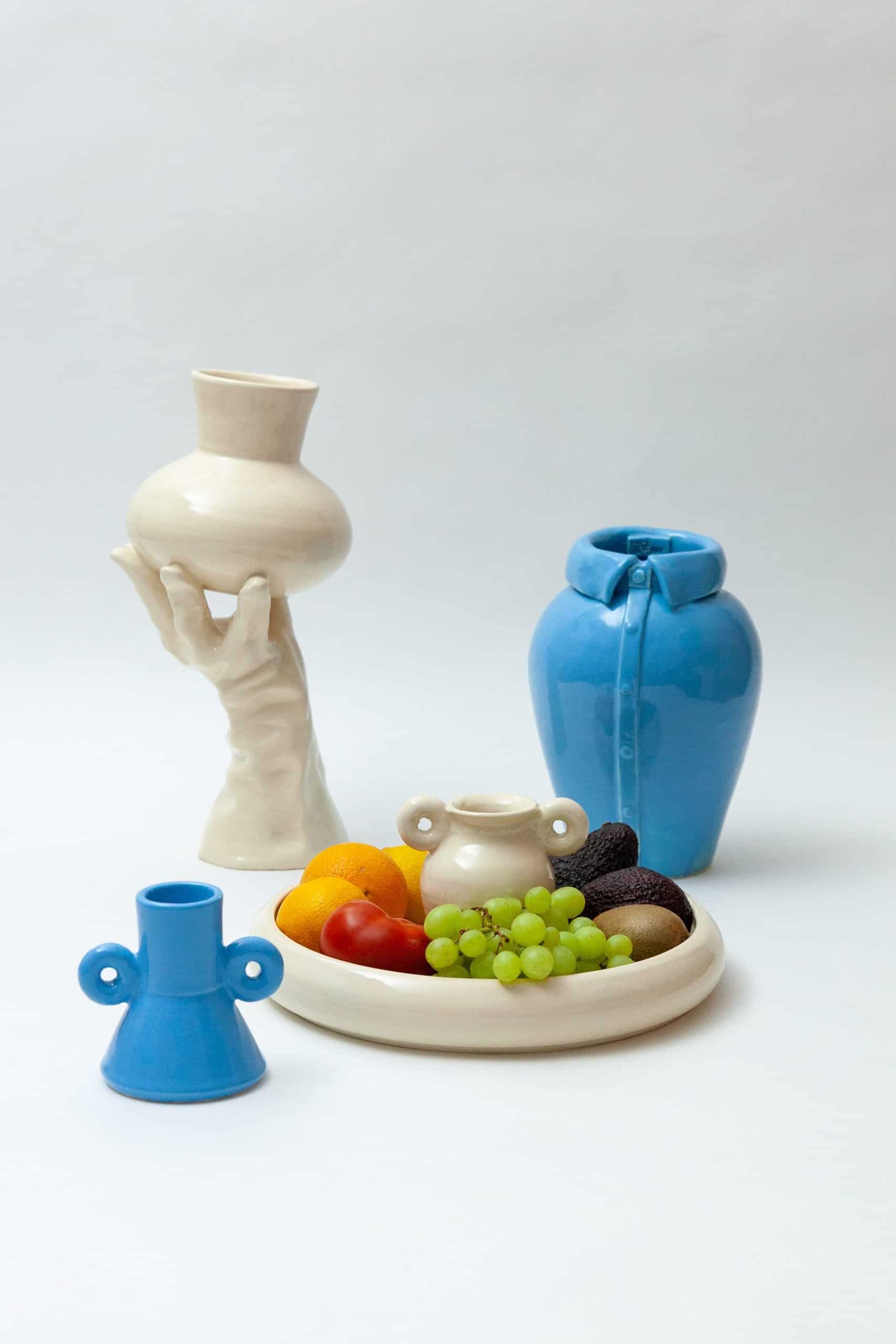
IRK: Looking ahead, are there materials or formats you dream of exploring beyond what you’re already doing?
There are many materials I’d love to try, especially glass. I’m also dreaming of collaborations with fashion brands, and projects that would transform unused stock into home objects.
IRK: And finally, for those who’d like to buy one of your pieces, where can they find and purchase your work?
They can find my work at www.lolamayeras.com, and in a few selected stores around the world. For collectable pieces or commission inquiries, they’re very welcome to reach out via Instagram or email.
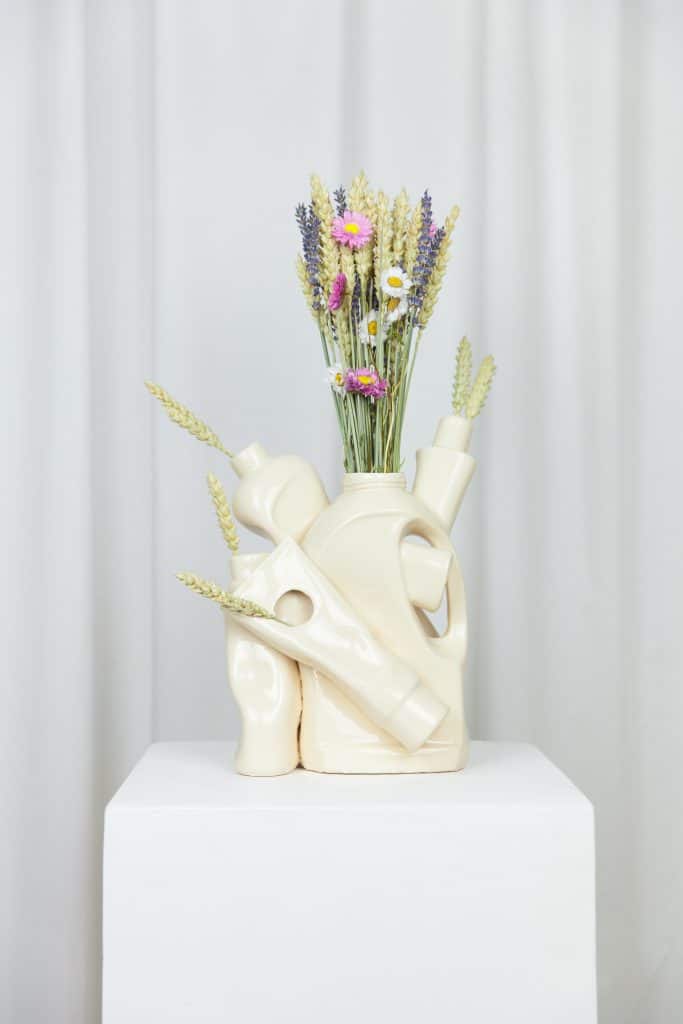
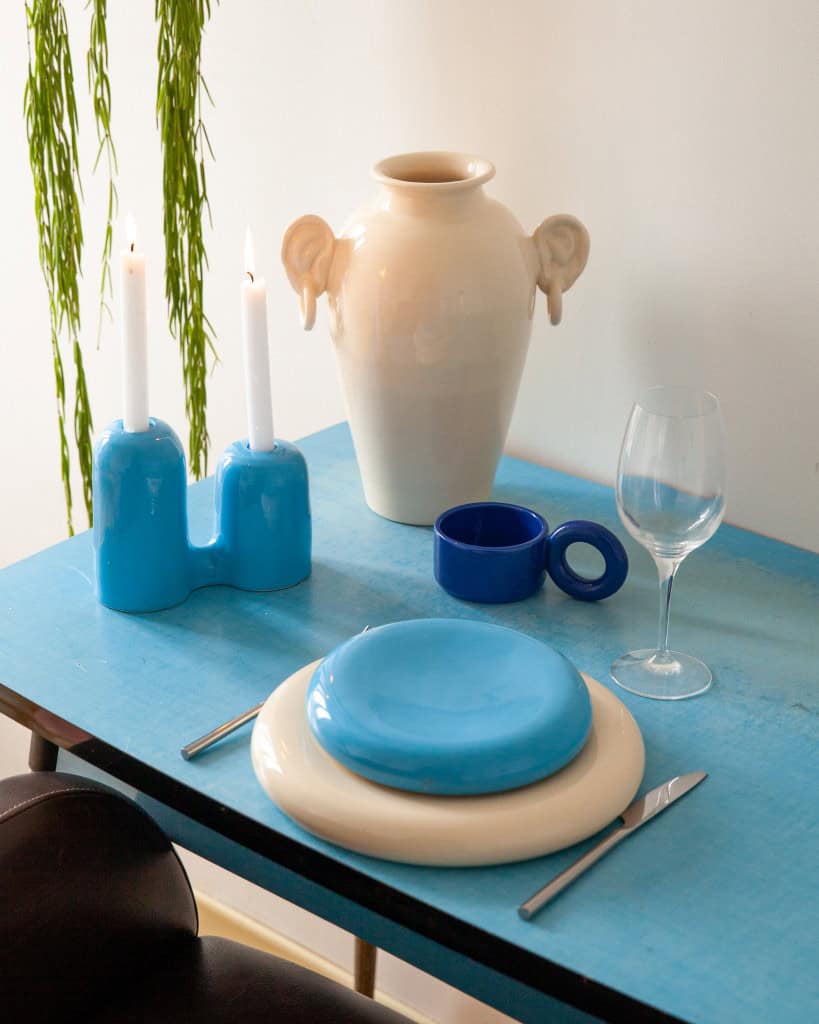
A celebration of function and form, Lola Mayeras’ ceramic creations blur the line between domestic objects and visual statements. Photo by @NAHMLOS Bram van Dijk.
More Than Design
Why Mayeras’ vision matters
In a moment obsessed with self-serious design, Mayeras offers a counter-gesture:, something with a unique identity. Indeed, she doesn’t design to fill space, she designs to reframe it. She reminds us that even a soap dish can carry intention. Lola Mayeras can do it all and still make you laugh when you least expect it.
Did you enjoy Lola Mayeras: Where vases have ears? For more on bold design rooted in craft, read our feature on Susie Novak’s collaboration in Mexico.
Share this post
Marie Loire Moulin approaches fashion as an immersive language—one that expresses identity, character, and cultural influence. Echoing Jean Cocteau’s observation that “Fashion is what goes out of fashion,” Moulin embraces the paradox at the heart of her craft. For her, fashion is a living, breathing art form—constantly deconstructed, reimagined, and reshaped in response to the world around it.
What fuels Marie Loire’s creativity is the ability to blend worlds—to explore the intersections of fashion, technology, history, and art. She is inspired by how these disciplines collide to generate experiences that are not only visually compelling, but also deeply purposeful.
Moulin is particularly drawn to artistic expressions that serve as bridges—linking cultures, fusing tradition with innovation. Sustainability, for her, is not a buzzword but a foundation. She sees it as a long-term commitment to thoughtful creation, not a passing aesthetic.
As a stylist working with actors on film sets, Marie Loire thrives on transforming a director’s vision into living, breathing characters. Through wardrobe and silhouette, she builds atmospheres that tell stories—stories of emotion, intention, and presence.
Her creative drive extends into virtual reality and immersive art, where she explores how emerging technologies can shift perception and spark connection across cultural boundaries. For Moulin, the digital realm is just another canvas—one that, when used with care, has the potential to resonate as powerfully as the physical world.
Whether on set or in virtual space, Marie Loire seeks originality and depth. Her work is marked by richly layered references, a reverence for detail, and a belief that fashion—at its best—can speak not just to the eye, but to the mind.
Read Next


